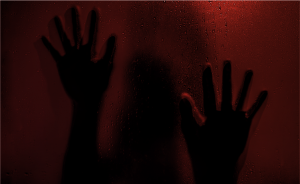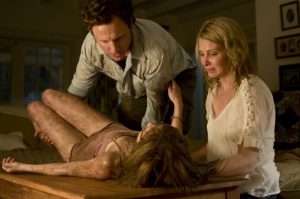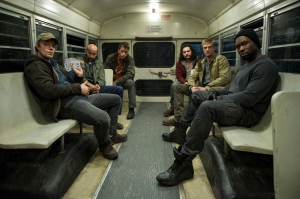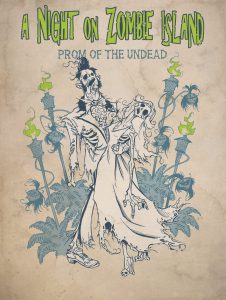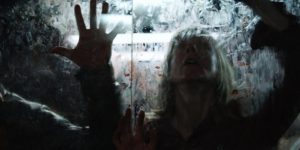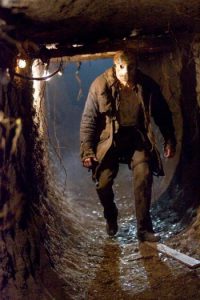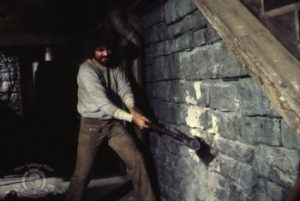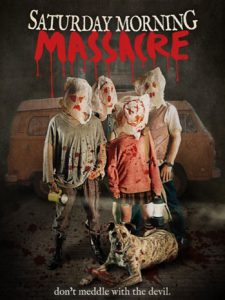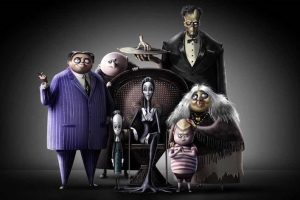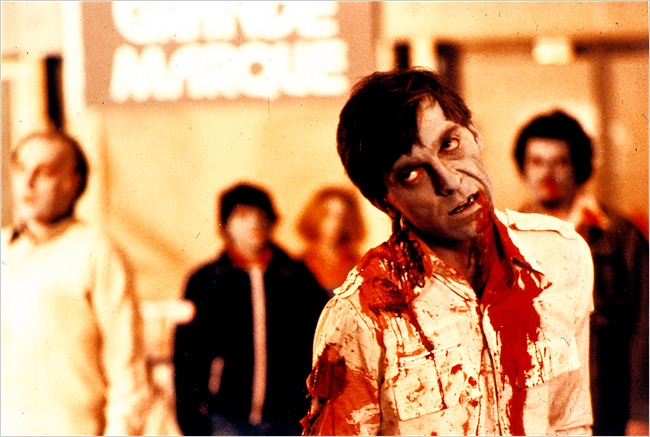
Must See Horror Films of the 1970s — Part Two
So in no particular order, here are my final twenty picks for the best horror of the 70s!
The Creature Feature: Dawn of the Dead
For the better part of my adolescence, this film sat atop my personal list of favorite horror movies. Though last week’s honoree Texas Chain Saw eventually toppled it from its throne (as did Dawn’s oft neglected sister Day), this 1978 paean to the perils of consumerism remains one of the most important horror films ever produced.
Although Dawn ends on an upbeat note compared to its predecessor, the happy wrap-up wasn’t always in the cards—or the script. A few photos still exist of the stunt head for a never-filmed finale when the pregnant Francine decides to commit suicide by propeller instead of hopping inside the helicopter and flying off to an uncertain future. For his part, Ken Foree’s Peter would have shot himself in lieu of waiting for the zombies to overtake him inside the mall. Things worked out a little better for both our protagonists in the final cut, even if mirthful prospects might not loom over the horizon in any post-apocalypse.
For those of you who don’t live in the Pittsburgh area like I do, the Monroeville Mall where the film was shot still stands to this day. Unfortunately, on an average weekend, it hosts a lot fewer brain eaters. And bell bottoms. Shucks on both accounts, right?

Runner-Up: Blacula
Last week’s list already featured The Vampire Flick category, but any ode to 1970s horror would be remiss not to include a shout-out to William Marshall’s ultimate post-modern bloodsucker. Blacula fits into a Creature Feature paradigm, as in Creature of the Night, but that doesn’t quite capture the scope of the film. Sure, it’s a vampire movie, but unlike some entries into that subgenre, it’s not overly austere, opting instead to play with the audience’s undead expectations. Perhaps most importantly, it forced horror out of its usual Euro-centric confines and transplants the lore to urban Los Angeles. From Love at First Bite to Dracula AD 1972, this was the epoch of Dracula re-imagined, but nobody repurposed Bram Stoker’s iconoclast with more savvy or cool than this 1972 classic. The unforgettable name alone proves it was meant to be.
The Sci-Fi Hybrid: Alien
Although I’m personally a bigger fan of the sequel (Team Newt! Team Hicks! Team Hudson!), this 1979 genre-blending standard takes the haunted house concept and deposits it the middle of the interstellar ether. That unprecedented move remains one of the biggest makeovers the horror genre has ever seen and also proves just how closely related science fiction and horror truly are. To make matters more academic, critics still pontificate about the film’s psychosexual underpinnings, and with phallic imagery galore, it’s easy to see why.
On a somber side note, I had earmarked this film for inclusion since my first inklings of writing a best of the 1970s horror, but it seems especially poignant to discuss Ridley Scott’s masterpiece in light of alien designer H.R. Giger’s passing this week. Across the universe, xenomorphs weep over their father’s loss. And watch out because they cry acid tears too.

Runner-Up: Invasion of the Body Snatchers
Among horror fans, we all implicitly know the rule about remakes. They suck. But every now and again, one comes along that doesn’t make us want to punch the director square in the face. 1978’s Invasion of the Body Snatchers retains the spirit of the original yet tinkers with the concept enough to justify its reimagining. And with a final scene as effective as it is haunting, you can still hear that wraithlike scream bellowing from Donald Sutherland’s imposter mouth. Admit it. You’re a little unnerved just thinking about it.
The Horror Comedy: Young Frankenstein & The Rocky Horror Picture Show
It’s rare when a four-decade-old movie is still relevant and performed today, but it’s even stranger when there are two of them from the same era and subgenre. Rocky Horror earns the title of longest theatrical run in cinema history, and chances are most readers of this article have taken their turn tossing the proverbial toast during a “live” performance.
Young Frankenstein, on the other hand, took a different route to eternal life. The charming story of Victor and his creation found itself reanimated on the stage, mostly due to the previous success of Mel Brooks’ The Producers on Broadway. With rumors that the horror musical might be transformed into a new film, this is one monster that’s got far more longevity than the doctor ordered.

The Blasphemer: The Omen
In the 1970s, any Old Hollywood star who wanted to keep acting had to put in time on at least one horror movie. As mentioned last week, Ava Gardner did The Sentinel. Bette Davis and her performance in Burnt Offerings appear in just a few entries. Even Liz Taylor did the eerie Night Watch (no, thankfully not the same as the 1997 Ewan McGregor stinker).
But nobody took his obligatory horror movie phase quite as seriously as Gregory Peck. When he did The Omen, this was not a phone-it-in kind of deal. He brought the same meticulous care to developing Ambassador Robert Thorn as he did, say, Atticus Finch. You’ve got to respect a guy who views horror as equal to classic lit. To play the role, Peck even took far less than his usual salary, though his percentage points turned into big bucks after The Omen proved a major hit in America and abroad.
The real star of the film, however, is the little tyke with a heart of brimstone. In moniker alone, Damien has become shorthand for evil among the kiddie set. Proof positive that childless couples might be onto something.

Runner-Up: The Exorcist
Yup, I relegated The Exorcist to the runner-up spot. That’s blasphemy in its own right, isn’t it? But I always hearken back to Beetlejuice’s line: I’ve the seen The Exorcist about 167 times, and it keeps getting funnier every single time I see it. Like the Ghost with the Most, I’ve become a bit jaded to Regan’s split pea vomit and cross abusing ways. My own prejudices notwithstanding, this movie deserves some respect. William Friedkin’s 1973 film successfully subverted expectations by building a kingdom of scares around a fresh-faced tween girl. Adolescent angst gone irredeemably satanic.
The Non-Romero Zombie Classic: Sugar Hill
Sugar Hill fills the zombie void in every way that Romero’s Dead series eschews. It’s filled with traditional zombie lore, going so far as to incorporate legendary voodoo spirit Baron Samedi into the supporting cast. It’s got an infectious theme song, aptly named “Supernatural Voodoo Woman” for your toe-tapping pleasure. It’s got tons of corny yet somehow endearing dialogue. And most importantly, it features an awe-inspiring leading lady who commands an undead army to avenge her fiancé’s death. Rick Grimes would be a lot less whiny if he had the same abilities.
That pretty much sums up Sugar Hill, but until you see it for yourself, you won’t be able to appreciate its uproarious yet honest approach to horror. This is a film that lacks pretention—and a sizeable budget—but still manages to insert some terrific social commentary into the mix. Among 1970s classics, Sugar Hill joins The Sentinel as two incredible movies I’m ashamed to admit I didn’t even know existed six months ago. But I’ve seen them now, and I’ll be singing their supernatural praises until the end of my horror loving days.

Runner-up: Zombie (Zombi 2)
Piggybacking on the success of Dawn of the Dead (AKA Zombi in Italy), Lucio Fulci titled his film Zombi 2 and apparently hoped no one would catch on that the two were completely unrelated. In retrospect, the overt attempt to imitate is a bit of a shame, considering this 1979 effort possesses a kind of ultraviolent charm that earned it a Video Nasty status (as well as this great story about Eli Roth and Quentin Tarantino forcing it on Brad Pitt). Come for the Caribbean scenery. Stay for the infamous zombie-chomping shark. Thirty-five years of horror fans can’t be wrong.
That Spielberg Magic: Jaws
Although the last movie I truly loved from Steven Spielberg’s oeuvre had velociraptors cooing in kitchens, that doesn’t mean the man didn’t start out strong in the horror genre.
Originally, Jaws was going to be the runner-up in another category, but my dad—the person who got me into horror, not to mention the world’s greatest proofreader—protested quite vehemently, so I decided to split it off into its own category. And since this was the film that gave us all summer blockbuster seasons to follow, the honor is not undeserved.
From a masterful score and glorious cinematography to gonzo characters and quotable “like a doll’s eyes” dialogue, all of the necessary pieces of horror heaven are here. In the ensuing four decades, many bloodthirsty aquatic creatures have attempted to steal Bruce the Shark’s ravenous thunder, but none of them have come close. Take that, Orca.

Runner-up: Duel
While Duel is by no means a conventional genre movie, the unseen villain’s pursuit of our road-tripping hero crafts a taut horror film if ever there was one. Plus, Richard Matheson wrote the screenplay, so how much more horror street cred do you really need?
The third made-for-television film on this list (Trilogy of Terror and Salem’s Lot both appeared last week), Duel proves that even before HBO and their so-called original extravaganzas, the small screen could supply real chills. And we’re not talking the usual goose bumps you get from accidentally turning on a Lifetime Movie.
The Surreal Masterpiece: Picnic at Hanging Rock
Considering all ten decades of horror cinema, from Nosferatu to Paranormal Activity XXVIII, the 1970s produced some of the most visually stunning genre films of all-time. Back then, filmmakers seemed to possess a more adventurous spirit that inspired them to play with the confines of the medium. And with Hollywood ceding some of its dominion to independent and international films, the time was nigh for movies to break out of their traditional molds.
Picnic at Hanging Rock is very much a product of its time. This is no fast-paced escapade, and the scares prove few if any. Instead, the ethereal film meanders along and provides no clear-cut answers. Adding to the mystery is that Joan Lindsay, author of the novel on which the movie is based, implied the Victorian-era tale of three schoolgirls and their teacher disappearing into Australian thin air was actually true. It’s pure fiction, but the invented back story only makes Picnic at Hanging Rock all the more unreal. Even the soundtrack entices you with a seductively mysterious quality. The panpipe never sounded so enchanting… or so unsettling.

Runner-up: Let’s Scare Jessica to Death
Cool declarative title notwithstanding, Jessica is not a good movie in any conventional sense. However, it does follow a striking 70s trend when horror films felt as raw as they looked. With a tenuous grip on reality from the get go, the title character constantly teeters on the brink of sanity, and the audience never knows what’s really happening or what’s in Jessica’s imagination, up to and including the end. Though the movie commits a number of absurd offenses, such as using a mouse for the role of a pet mole (and then apparently murdering the rodent when a stand-in corpse could have worked just as well), this slow burn does somehow manage to lodge itself decisively under the skin.
As a side note, remember that if you ever have a mentally ailing friend, the best place for him or her to convalesce is not a remote atmospheric house in the world’s creepiest town. Take them to where any self-respecting neurotic lives: the suburbs.
The Haunted House: Burnt Offerings
Truth be told, the not-so-humble abode in Burnt Offerings proves more sentient than haunted, a living organism in need of pain and suffering to subsist. And taking do-it-yourself to a whole new level, once it garners a side of misery, this house fixes itself, sloughing off old roof shingles and trimming its own lawn. As such, you can predict the downer ending during the first ten minutes, but that doesn’t entirely spoil the ride.
While a moody ambiance permeates every soft-focused shot, the cast clinches the deal. As the redshirt Aunt Elizabeth, Bette Davis amuses with her scenery-chewing one-liners and overall feisty demeanor. Her scenes with the always awesome (and awesomely over-the-top) Oliver Reed are among the highlights of the film, though as family matriarch, Karen Black manages to hold her own as well. A southern Gothic mystery as much as a gruesome expose into the inner workings of the nuclear family, Burnt Offerings is a bucolic pressure cooker, complete with an off-putting cameo from the ever eccentric Burgess Meredith.

Runner-up: The Amityville Horror
Like the frolics of Regan, Amityville is another genre standard that’s never really gotten me going. However, there’s a lot to be said for a horror movie purportedly based on a true wall-bleeding story. Though the specifics of the Lutz family’s home-owning nightmare have been refuted again and again over the years, this 1979 money pit-gone-awry still ranks among many horror fans’ favorite films. Plus, if nothing else, Amityville features Margot Kidder. And if the 1970s taught us anything, then we know wherever she goes, corny madcap hijinks are sure to follow.
The Murderous Still Life: Magic
Long before his award-laden turn as Hannibal Lecter, Anthony Hopkins showcased his penchant for ventriloquism in lieu of fava beans. As it turns out, he could be just as chilling even without that messy cannibalism scheme. Playing the isolated and awkward Corky, Hopkins descends slowly into madness, governed all the while by his maybe-living dummy Fats. Some horror fans prefer the previous year’s Audrey Rose as their Hopkins horror of the era, but Magic’s ambiguity alone earns a place on this list. The film leaves the audience wondering until the final frame if Corky’s psyche was indeed unhinged or if Howdy Doody is far creepier than we thought.
And since it’s a cool genre film of the 70s, Burgess Meredith makes his obligatory appearance. If only there was an award for Horror MVP of the decade.

Runner-up: Tourist Trap
Sentient mannequins under the control of Chuck Connors. No, it’s not a deleted scene from that old Twilight Zone episode set in the department store. It’s Tourist Trap, a surreal flick so littered with horror tropes that the film reuses some of its own gags just to ensure you caught the reveal the first time. So, Tanya Roberts’ skimpy tank top notwithstanding, is it a genuinely awful horror movie? Yes, it is. That’s why you shouldn’t watch it without these guys.
The Uncategorized: The Little Girl Who Lives Down the Lane
The 1970s boasts countless films that can’t be described as straight horror but still flirted with the genre enough to put them in the gore ballpark. This 1976 Jodie Foster vehicle was released the same year she earned an Oscar nomination for her lauded role as child prostitute Iris in Taxi Driver. However, her turn as the eponymous Little Girl proves perhaps her most nuanced and unsolvable performance. Though the body count might be paltry for a horror entry, the unsettling mood permeating every scene leaves you mystified as to why cinephiles so rarely discuss this film.
And if you ever speculated about how Charlie Sheen got to be such a creeper, then just watch his dad Martin play the pedophile hunting Foster’s ferociously independent Rynn Jacobs. One viewing and you’ll never wonder again.

Runner-up: Phantom of the Paradise
Campy, low-budget, and irredeemably odd, the tragicomic tale of Winslow Leach channels the likes of The Phantom of the Opera and Faust. But simply saying it recycles old stories doesn’t come close to encapsulating this film. An early directorial effort of Brian De Palma, Phantom of the Paradise has style to spare, even if there’s nary a character you like. That’s okay, though. Genre iconoclasts Winslow, Phoenix, and Swan will stick with you long after the face-melting Dorian Gray ending.
So that concludes Part Two of the Must See Horror Movies of the 1970s! Did your favorite make the cut? Let me know in the comment section!



